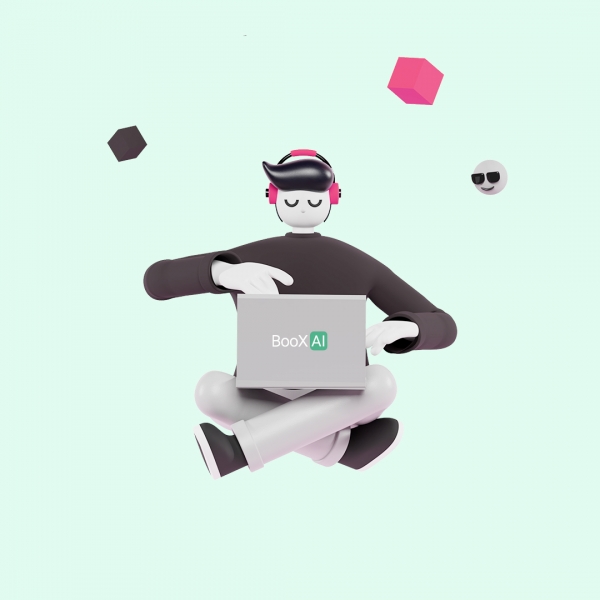So, you’ve written a book—congratulations! Now comes the next big decision: how to get it out into the world. Enter the showdown between Print-On-Demand vs Traditional Distribution. Think of Print-on-Demand (POD) as the fast-food of publishing—you print your book only when someone orders it, no upfront costs, no piles of unsold copies gathering dust. It’s flexible, fast, and perfect for indie authors who don’t want to commit to large print runs. On the other hand, Traditional Distribution is like hosting a banquet—you’re using bulk printing, betting on big sales, and dealing with the logistics (and risk) of storing and managing thousands of books.
Both approaches have their perks, but they come with different price tags and levels of commitment. Whether you want the convenience of POD or the scale of traditional printing depends on your goals, budget, and how much risk you’re ready to take. By the end of this article, you’ll know which method suits your publishing dreams best. So, let’s dive into the world of book distribution and printing and find the perfect fit for your masterpiece!
Print-On-Demand vs Traditional Distribution: A Quick Snapshot
Imagine you’ve just written a brilliant book (congratulations!). Now, you have two options for getting it out to the world: Print-on-Demand (POD) or Traditional Distribution. POD is like a made-to-order meal, while traditional distribution is more like cooking for a banquet—you’re producing in bulk and hoping no one leaves hungry (or worse, that you don’t end up with piles of leftovers).
Your Publishing Journey Awaits – Start NowIn essence, POD allows books to be printed as they are ordered, while traditional distribution means producing large quantities upfront, storing them, and distributing over time, which increases inventory costs. So, what’s right for you? Let’s dive deeper into both.
Print-On-Demand: The Instant Noodle of Publishing
Print-On-Demand (POD) is the modern-day hero for self-publishers and small businesses. The beauty of POD lies in its flexibility: books are printed as customers order them. No upfront costs, no cluttered storage spaces full of unsold books, and no stress about predicting sales volume. Digital printing technology plays a crucial role in this process, ensuring cost efficiency, high color accuracy, and excellent image quality.
It’s the ultimate efficient solution. Want just one copy? Sure, no problem. Want fifty? We’ve got you covered.
Why is POD so great?
- No upfront inventory: You only print what you sell.
- Cost-effective for small quantities: Perfect for the self-publisher or indie author who isn’t sure how many books they’ll sell.
- No wasted resources: No more stacks of unsold inventory collecting dust. It’s printing on demand, baby!
- Print on demand business: Developing a unique concept for your print on demand business can help you resonate with your target audience. This technology allows for customized products with lower upfront costs, enabling you to test markets and produce items as needed, thus reducing waste and risk associated with traditional mass production.
With POD services like those offered at Spines, you can get your book out there without taking on the financial risk of traditional methods. Plus, POD fits right into Spines’ fast and flexible model: you can publish in under 30 days, with no fuss. Imagine how great that feels compared to traditional publishing, which can take months!
Offset Printing: Go Big or Go Home
Now, let’s talk about offset printing—the classic method for printing large quantities. This approach is perfect when you know you’re going to need a ton of books (think Harry Potter launch status). Offset printing uses plates to transfer ink onto paper in bulk, making it extremely cost-effective for larger orders and ideal for mass production. The more you print, the cheaper it becomes per unit.
But here’s the catch: it’s a big commitment. Offset printing demands upfront costs and space to store the books, so it’s a bit like hosting a party for 500 guests when you’re not sure if 5 will show up.
The pros of offset printing:
- Lower cost per unit (in bulk): If you’re printing thousands, this method will save you money in the long run by reducing the printing cost per copy.
- High-quality prints: Offset printing has been around for a while, and it’s still the gold standard for sharp, crisp pages.
However, for smaller quantities or self-publishers, offset printing can feel like overkill. Plus, the risk of unsold inventory can become a financial burden—cue the sound of a thousand unsold books falling into the abyss.
Print-On-Demand Services: Bringing Your Book to Life, Stress-Free
POD services have revolutionized publishing, making it accessible for anyone. Gone are the days of requiring huge upfront investments. With services like Spines, you can upload your manuscript, design a cover using AI-powered tools, and watch your book become a reality with minimal effort. Print on demand books offer superior print quality and environmental advantages, as they are printed only as orders are received, minimizing waste. And here’s the best part—POD works for all formats. Whether it’s a paperback, hardcover, eBook, or even an audiobook, you’ve got it all at your fingertips.
Why Spines?
At Spines, we combine AI technology with human expertise to streamline the process of bringing your book to life—whether it’s a print-on-demand project or a full-scale global distribution plan. And we’re fast. We’ll have your book ready for sale in under 30 days, which means you’ll be a published author before you know it.
Traditional Printing Methods: The Old Guard of Publishing
Traditional printing methods are reliable but often expensive. These methods have been used for decades by large publishers, producing thousands of books in one go. And while the economies of scale might work in your favor for a mass-market release, smaller authors face hefty upfront costs and the stress of inventory management. Plus, who has the storage space to store thousands of unsold books?
Traditional printing might give you the nostalgia of “old-school” publishing, but it’s often not as cost-efficient for small or first-time authors. Spines, on the other hand, offers you all the benefits of publishing without the hassle of upfront investments.
Digital Printing: Bridging the Gap
So, where does digital printing fit in? Think of it as the hybrid solution—kind of like meeting in the middle between POD and offset printing. Digital printing is great for small batches and on-demand manufacturing, offering a quick turnaround without the need for plates or setup costs. It’s more flexible than traditional printing but doesn’t always offer the same cost savings as POD for ultra-low volumes.
Your Publishing Journey Awaits – Start NowIt’s the printing method of choice for businesses that need marketing materials, smaller product runs, or customization for niche audiences. It’s efficient and, generally speaking, cost-effective for runs in the hundreds rather than the thousands.
Managing Upfront Costs and Inventory: What’s Your Risk Tolerance?
Let’s be honest: upfront costs and inventory management can be a headache. Traditional printing requires you to pay for everything upfront, including production, storage, and, potentially, shipping fees for unsold books. That’s a lot of risk. Self publishing offers a flexible approach, allowing authors to choose between print on demand (POD) and offset printing based on their project needs. POD eliminates that problem by only printing what you need when you need it.
With Spines’ POD solution, we’ve eliminated the typical risks associated with financial investment. Why pay thousands of dollars before your book even hits the shelves when you can opt for a flexible, pay-as-you-go model?
Profit Margins: Maximizing Your Earnings
Profit margins are a key consideration for any author or business. While offset printing might seem like it gives you more bang for your buck with lower per-unit costs in large print runs, POD offers a cost-efficient model for smaller quantities. Plus, with a print on demand business, you’re not left holding the bag (or a warehouse full of unsold books).
At Spines, we’re committed to maximizing your profit margin by offering affordable plans that give you control over your royalties and distribution. You keep 100% of your royalties, ensuring you get paid what you deserve without hidden fees or complicated contracts.
Quality Control: Consistency is Key
Concerned about quality? We get it. Whether you’re printing with POD or using traditional methods, quality control matters. Digital printing technology plays a crucial role in achieving high color accuracy and image quality, enhancing the visual appeal and customization of magazines. The good news is that POD has come a long way in recent years, and at Spines, we ensure that every book that goes out the door meets professional publishing standards.
Which Method Should You Choose?
Ultimately, whether you choose print-on-demand or traditional printing depends on your goals, your budget, and how many books you think you’ll sell. If you’re a self-published author or small business, POD offers flexibility, reduced risk, and minimal upfront costs—making it a no-brainer for first-timers or those who want to dip their toes in the publishing pool. Print on demand books also provide superior print quality and environmental advantages, as they are printed only as orders are received, minimizing waste.
But if you’re planning a mass-market release or already have a large audience, traditional printing might still make sense. Just be ready to deal with the financial risks and logistical headaches.
Ready to get your book out there? At Spines, we’ve helped over 1,200 authors publish their work, from fiction and memoirs to business and self-help books. Our platform streamlines everything—cover design, editing, formatting, and global distribution. Why wait? Sign up today and take the first step towards becoming a published author with our quick, easy, and flexible publishing solutions. We can’t wait to see your story come to life!
Your Publishing Journey Awaits – Start Now







